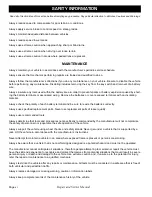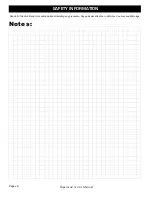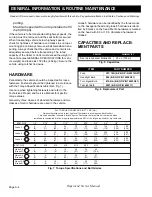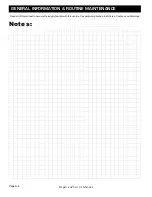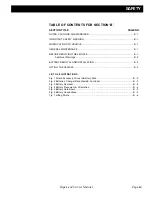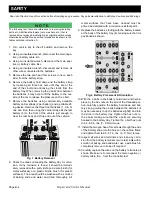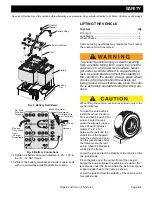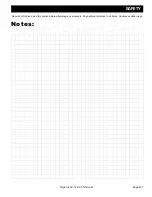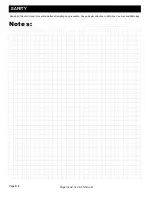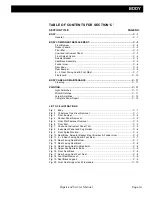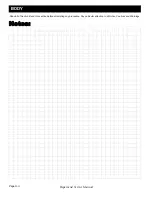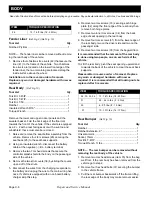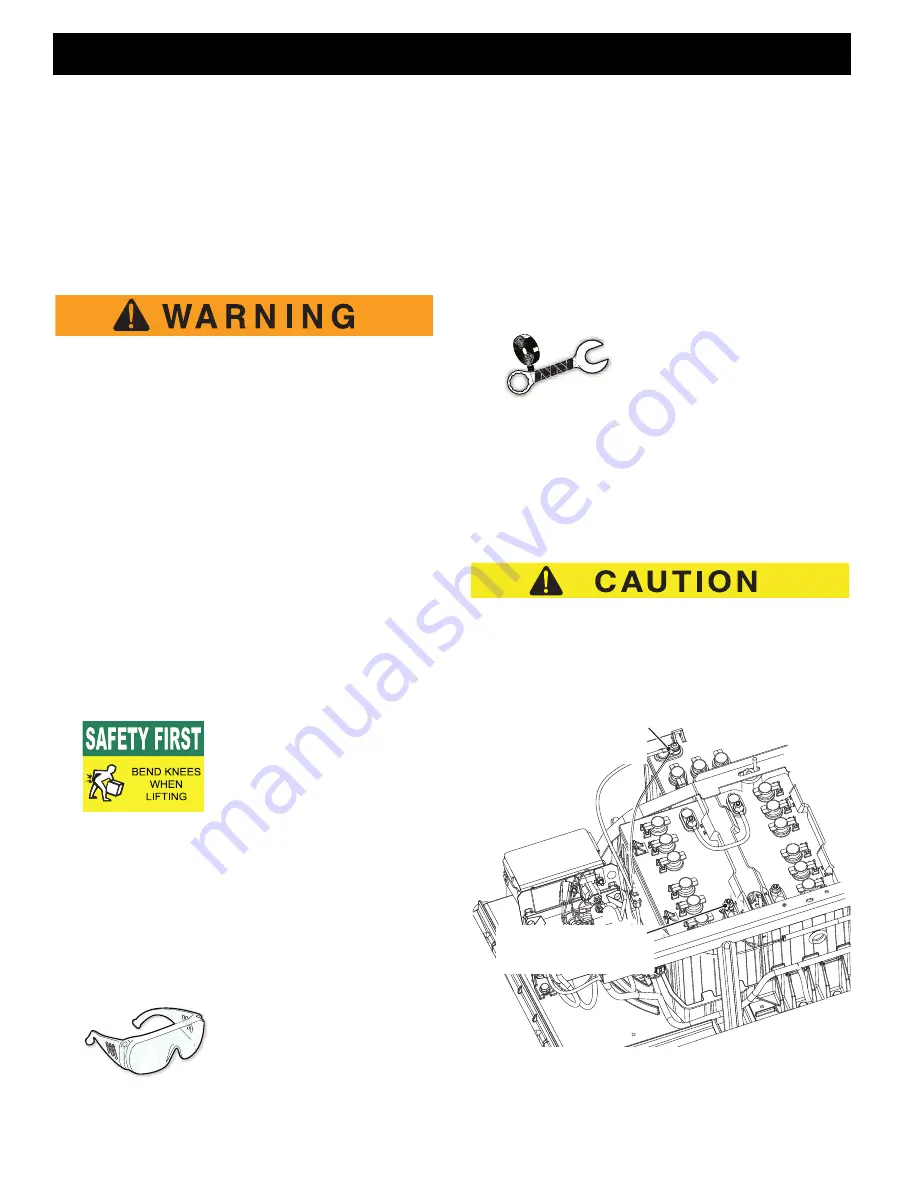
Page B-2
SAFETY
Repair and Service Manual
Read all of Section A and this section before attempting any procedure. Pay particular attention to all Notes, Cautions and Warnings.
B
If repairs are to be made that will require
welding or cutting, the batteries must be
removed.
Additional Warnings
Before working on the electrical system, be sure to read
and understand the following warnings that pertain to
the electrical system repair or maintenance.
To prevent explosion that could result in
severe personal injury or death, keep all smok-
ing materials, open flame or sparks away from
gasoline and batteries.
Hydrogen gas is generated in the charging
cycle of batteries and is explosive in con-
centrations as low as 4%. Because hydro-
gen gas is lighter than air, it will collect in
the ceiling of buildings necessitating proper
ventilation. Five air exchanges per hour is
considered the minimum requirement.
Be sure that the key switch is off and all
electrical accessories are turned off before
starting work on vehicle.
The batteries should always be removed
before any servicing or repairs that will gen-
erate sparks.
Never disconnect a circuit under load at a
battery terminal.
Batteries are heavy. Use
proper lifting techniques
when moving them. Always
lift the battery with a com-
mercially available battery
lifting device. Use care not
to tip batteries excessively when removing
or installing them; spilled electrolyte can
cause burns and damage.
The electrolyte in a storage battery is an
acid solution which can cause severe burns
to the skin and eyes. Treat all electrolyte
spills to the body and eyes with extended
flushing with clear water. Contact a physi-
cian immediately.
Always wear a safety
shield or approved safety
goggles when adding water
or charging batteries.
Any electrolyte spills should be neutralized
with a solution of 1/4 cup (60 ml) sodium
bicarbonate (baking soda) dissolved in 1 1/
2 gallons (6 liters) of water and flushed with
water.
Overfilling batteries may result in electrolyte
being expelled from the battery during the
charge cycle. Expelled electrolyte may
cause damage to the vehicle and storage
facility.
Wrap wrenches with vinyl
tape to prevent the possi-
bility of a dropped wrench
’shorting out’ a battery,
which could result in an
explosion and severe personal injury or
death.
Aerosol containers of battery terminal pro-
tectant must be used with extreme care.
Insulate metal container to prevent can
from contacting battery terminals which
could result in an explosion.
ALL accessories that do NOT use the accessory wiring
harness MUST be connected to draw from the entire 48
Volt battery pack. The Operational Performance Guaran-
tee of 2 rounds per day shall be void in non-factory acces-
sories that use more than 1 Amp/Hour of energy per
round are installed on the vehicle.
Fig. 1 Attach Accessory Wires to Battery Pack
ATTACH NEGATIVE WIRE
FROM ACCESSORY TO
(-) BATTERY TERMINAL
ATTACH POWER WIRE
FROM ACCESSORY TO
(+) BATTERY TERMINAL

